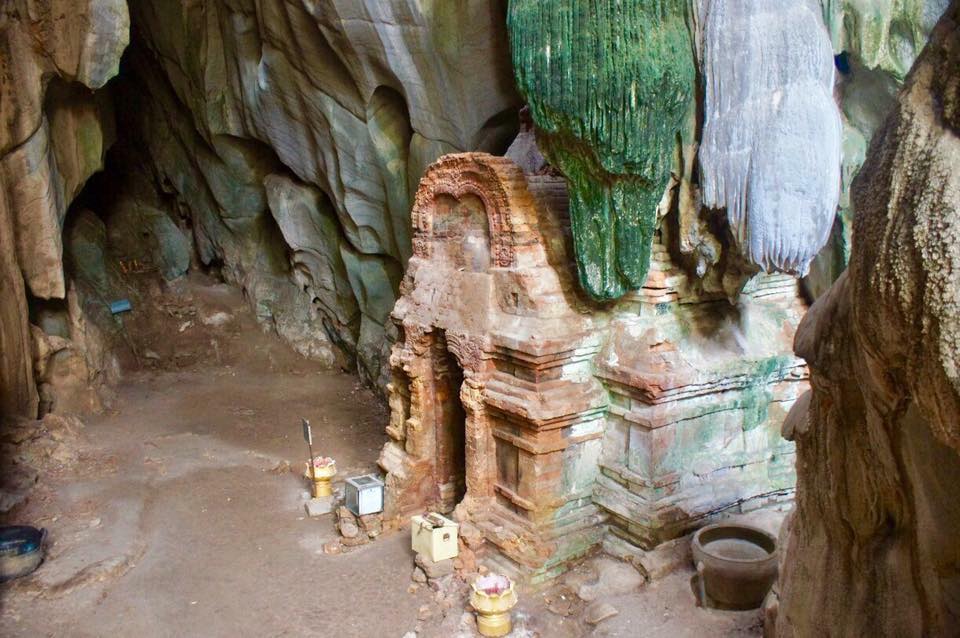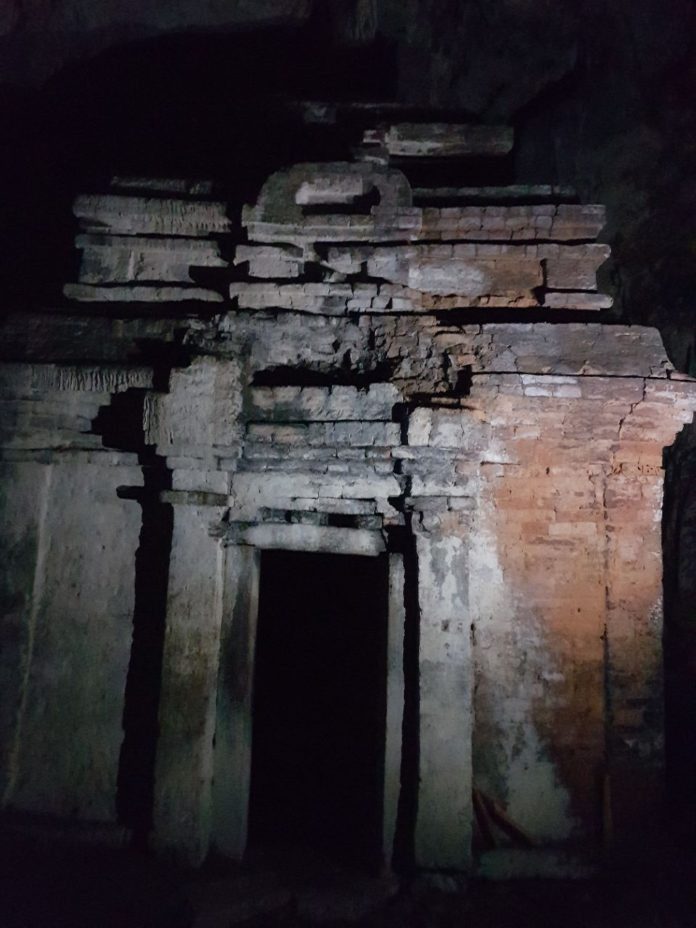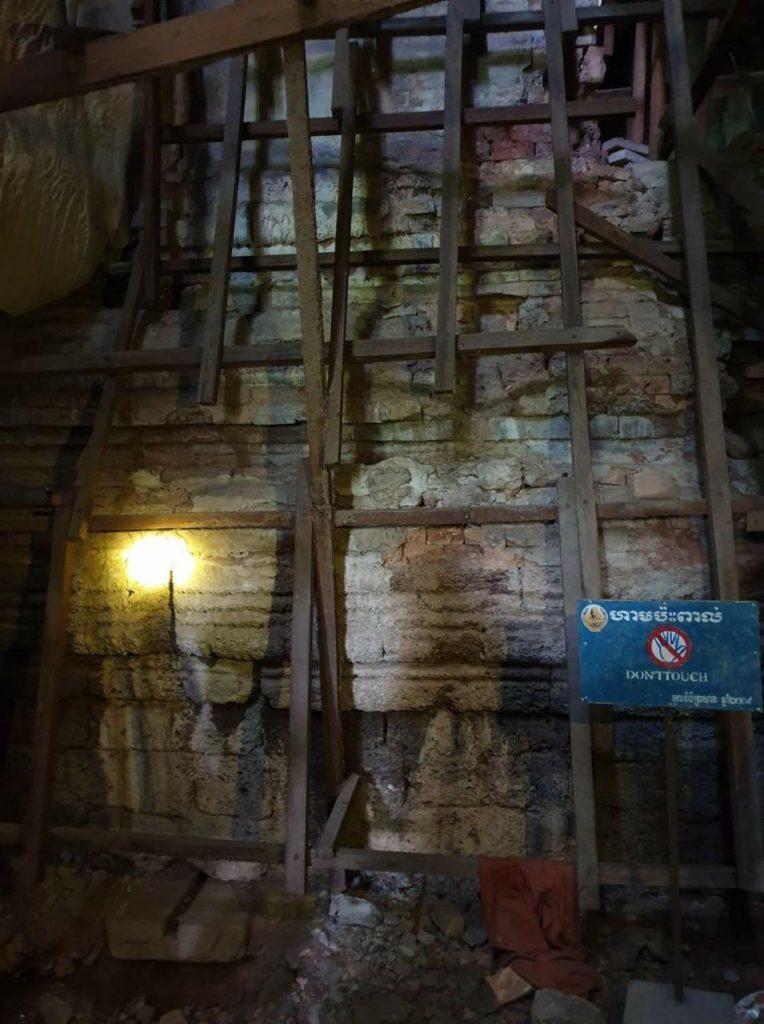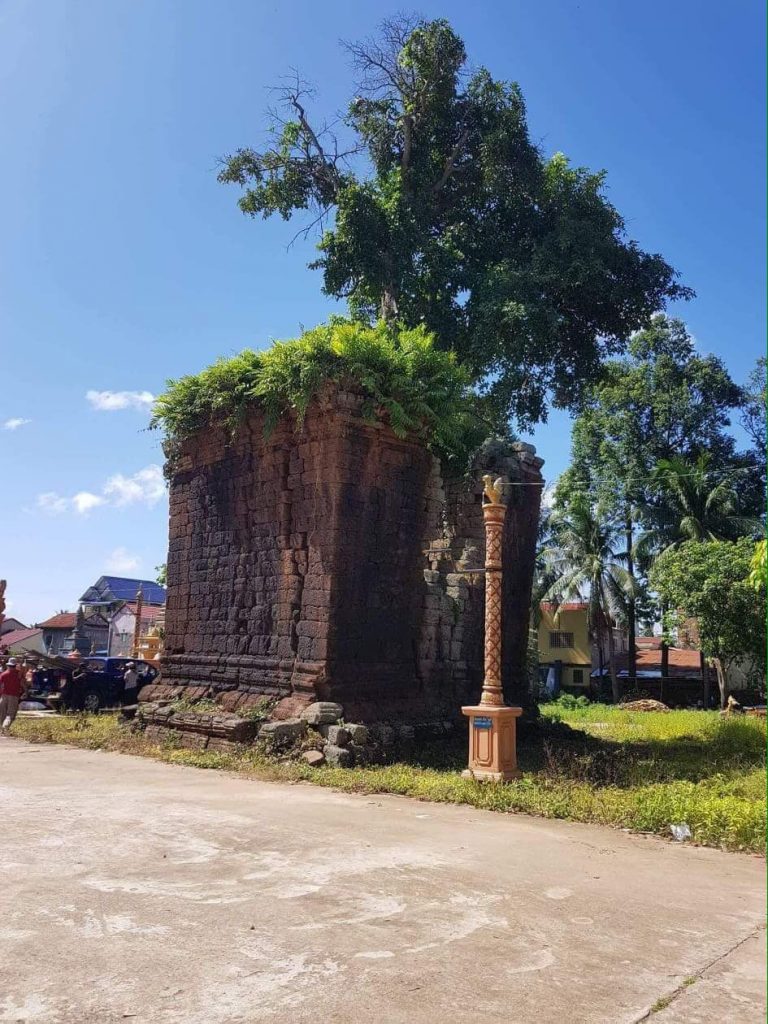Kampot: According to Meak Vuthy, director of the Kampot Provincial Heritage Office, Kampot has very few ancient temples left. The remaining temples are over a thousand years old.
According to this cultural official, the special features of the ancient temples in Kampot province, out of the four remaining temples, three temples are built inside caves- which is different to temples in other provinces and areas.

Phnom Chhnok is unique in that it is built of bricks in a cave at least 40 meters above the ground. Phnom Chhnok is located about 8 km from Kampot town on National Road 33 to Kep and 27 km on National Road 3.
According to archaeologists, Phnom Chhngok has a total of 121 caves, including eight large caves and 113 small caves. Upon entering the brick temple, you will find a natural stone ‘linga’ penis growing from the bottom of the mountain in the middle of the temple. This feature made the temple great and powerful in the past and an important monument in the early days of the Khmer religion.

Another temple built in the cave is Phnom Khyang. This is a small temple built in the late 6th and early 7th centuries, even before the Angkorian period. Phnom Khyang temple is rarely known and is very hard to find.
The cave temple or the temple of Phnom Totong is also built in a cave facing west, with a tower made of brick and laterite and a door frame made of (turtle liver?). In front of the temple, there is a natural linga penis like Phnom Chhnok and Phnom Kheng, and there is a water running feture in the north corner.

There is an inscription called Cave of God (now gone) which, according to the inscriptions, dates from the reign of King Sovarman I in the 9th century in two languages: ancient Khmer and Sanskrit. According to the temple structure in the Totong cave, this temple was built in the 7th century AD during the reign of Isavarman I in the Chenla period and dedicated to Shiva.
The last remaining temple is Wat Prasat. Prasat Wat Prasat is a Hindu temple. Prasat Wat Prasat was built in the 11th century by King Suryavarman I, and is about 1000 years old.

Prasat Wat Prasat has a quadrangular tower made of laterite, 7 meters long and 7 to 8 meters high, facing east. The temple is in a state of disrepair as a tree root inside the temple may cause the walls to collapse one day.
Apart from the four remaining temples, according to Heritage Officer Meak Vuthy, Kampot province, there are some ruined temples such as:
– Phnom Neang Seda Oun temple in Teuk Chhou district
– Prasat Phnom Prasat in Kampong Trach district
– Preah Oka temple in Angkor Chey district
– Phnom Thmor Puok temple in Chhouk district
The foundation of Rong Phnom Phaov temple in Kampong Trach district
– Elephant Mountain Temple Foundation in Kampong Trach District
In addition, there are two prehistoric stations, Phnom Laang and Phnom Kbal Romeas. KPT
